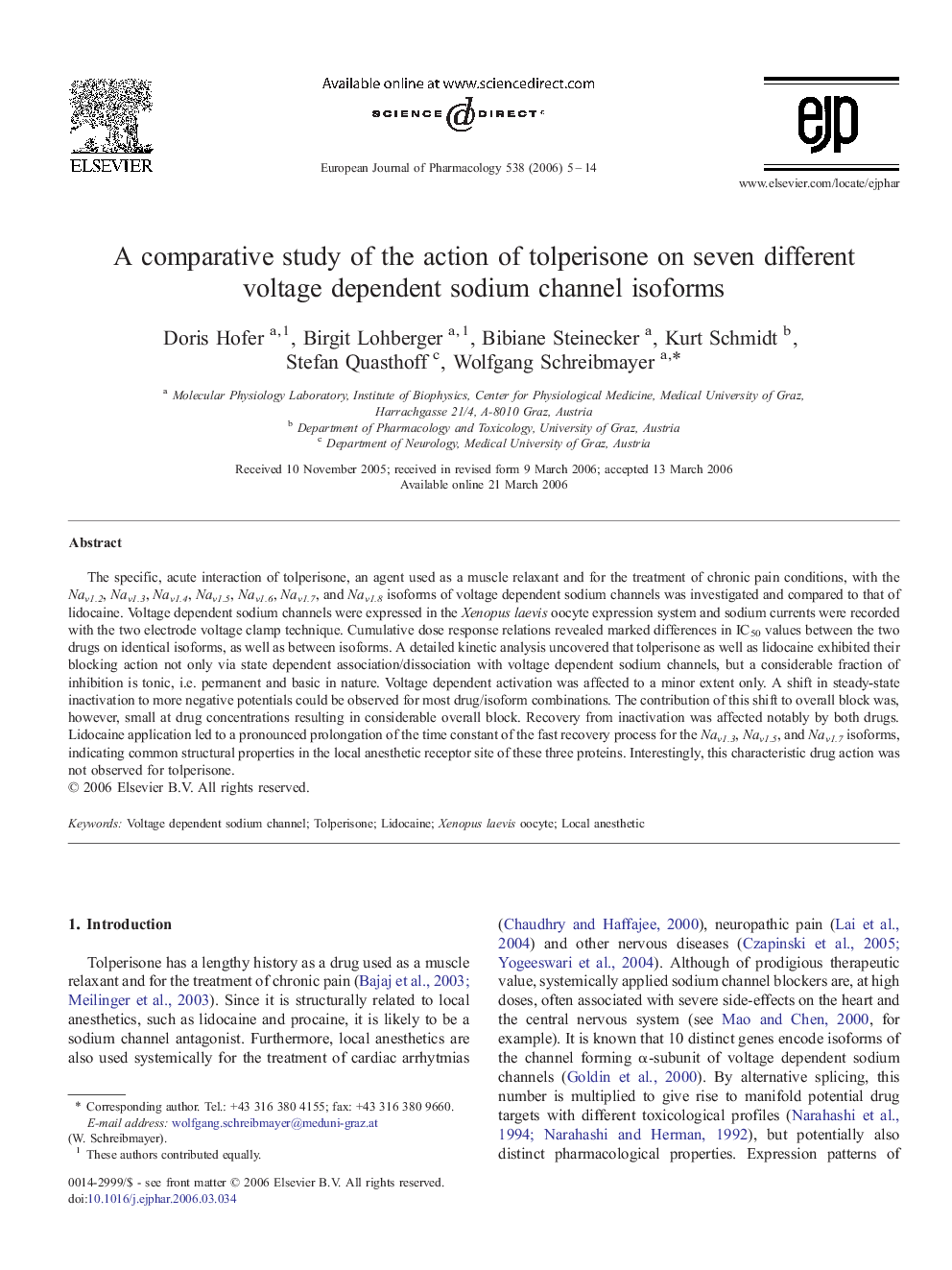| Article ID | Journal | Published Year | Pages | File Type |
|---|---|---|---|---|
| 2537121 | European Journal of Pharmacology | 2006 | 10 Pages |
The specific, acute interaction of tolperisone, an agent used as a muscle relaxant and for the treatment of chronic pain conditions, with the Nav1.2, Nav1.3, Nav1.4, Nav1.5, Nav1.6, Nav1.7, and Nav1.8 isoforms of voltage dependent sodium channels was investigated and compared to that of lidocaine. Voltage dependent sodium channels were expressed in the Xenopus laevis oocyte expression system and sodium currents were recorded with the two electrode voltage clamp technique. Cumulative dose response relations revealed marked differences in IC50 values between the two drugs on identical isoforms, as well as between isoforms. A detailed kinetic analysis uncovered that tolperisone as well as lidocaine exhibited their blocking action not only via state dependent association/dissociation with voltage dependent sodium channels, but a considerable fraction of inhibition is tonic, i.e. permanent and basic in nature. Voltage dependent activation was affected to a minor extent only. A shift in steady-state inactivation to more negative potentials could be observed for most drug/isoform combinations. The contribution of this shift to overall block was, however, small at drug concentrations resulting in considerable overall block. Recovery from inactivation was affected notably by both drugs. Lidocaine application led to a pronounced prolongation of the time constant of the fast recovery process for the Nav1.3, Nav1.5, and Nav1.7 isoforms, indicating common structural properties in the local anesthetic receptor site of these three proteins. Interestingly, this characteristic drug action was not observed for tolperisone.
